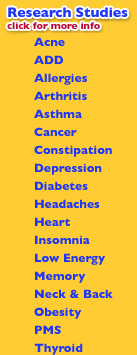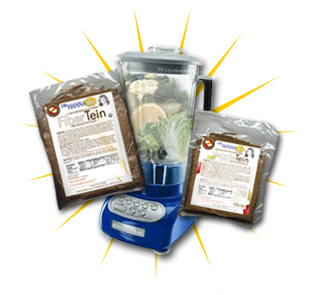

 |
 |
 |

|
Dr. Hanna's NEW SCIENTIFIC CONCEPT for specific conditions and disease through cellular nutrition.
The current statistic for cancer is that 1 in 4 people in the United States have cancer. The prediction is that by the year 2000, this will increase to 1 in 2! That is a frightening statistic. That means, every single family will be affected by this killer disease! (from Cell-Ology Book I - Concept Printed 2000) The doctors are trying to find better ways to reduce this statistic and the treatments and medicines are better able to target the site of the disease that ever before. When invaders such as parasites, worms, virus, bacteria, and fungus enter our cells, the toxcicity they generate can cause carcinogenic components. These carcinogenic components can penetrate to the nucleus of the cell and cause damage in a variety of ways. One of these ways seems to be in changing the cell's genetic factor. The genetic factor inside the cell gets the message to increase replication. The cell begins to reproduce, faster and faster, but the new cells are weak and do not function the same as the original cell. Cancer, is a condition that occurs from uncontrollable cell growth. The cancer cells are weak, take up space and do not perform the same function as other healthy cells of that origin. One interesting fact is that scientists have discovered particular virus strains made of tiny RNA components that seem to be responsible for certain kinds of cancer. Modern scientific technology has provided better, higher power molecular biology tools and they have been able to identify very tiny strains of virus which appear to be responsible for certain kinds of cancer. Some cancers caused by virus include Leukemia, stomach, ovarian, and liver. It seems the virus lurks on the outside of the cells. If the cell is healthy and strong, it cannot penetrate the cell membrane and will remain dormant. However, if the cell becomes weakened, then it can go through the cell membrane to do it's damage. These virus invaders not only damage the nucleus of the cells, but also command the cell to gather more foods that contain carcinogenic components. This is the best food for these virus strains. As the cells become weaker, and more carcinogenic components are inside the cell body, cells begin to die faster and the organ shuts down. By changing the internal environment of our body with different nutrients we can inhibit the proliferation of invaders and reduce the risk of cancer. Virus strains lurk outside the cell membrane first. For complete information see: Cell-Ology BookI - Concept & Cell-Ology Book II - Program
|
